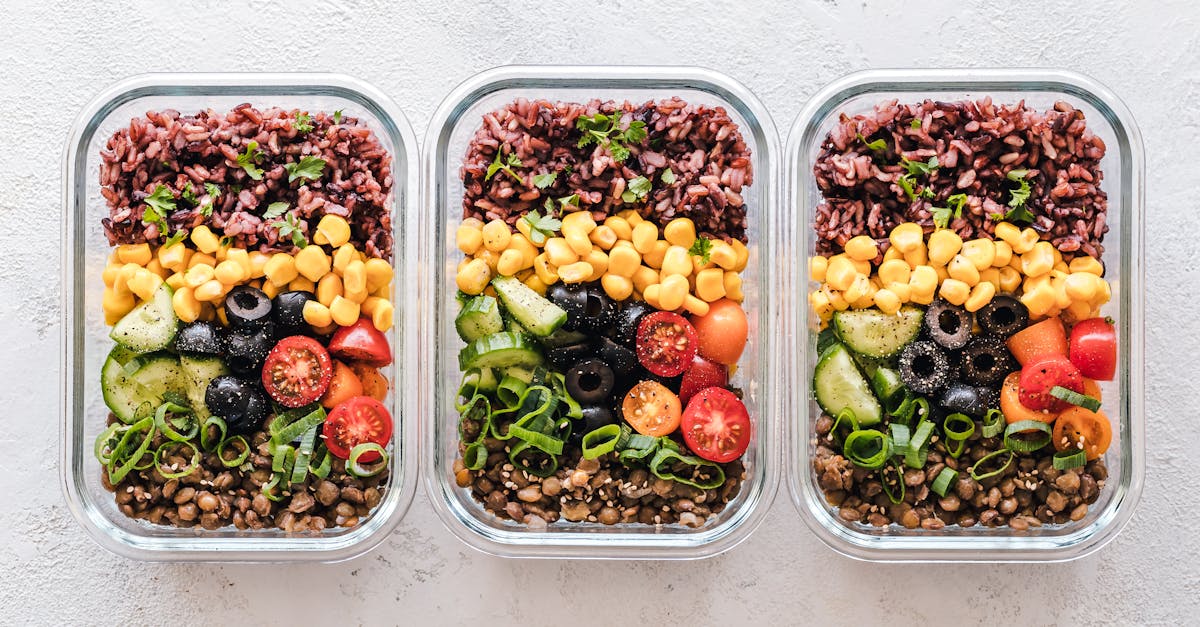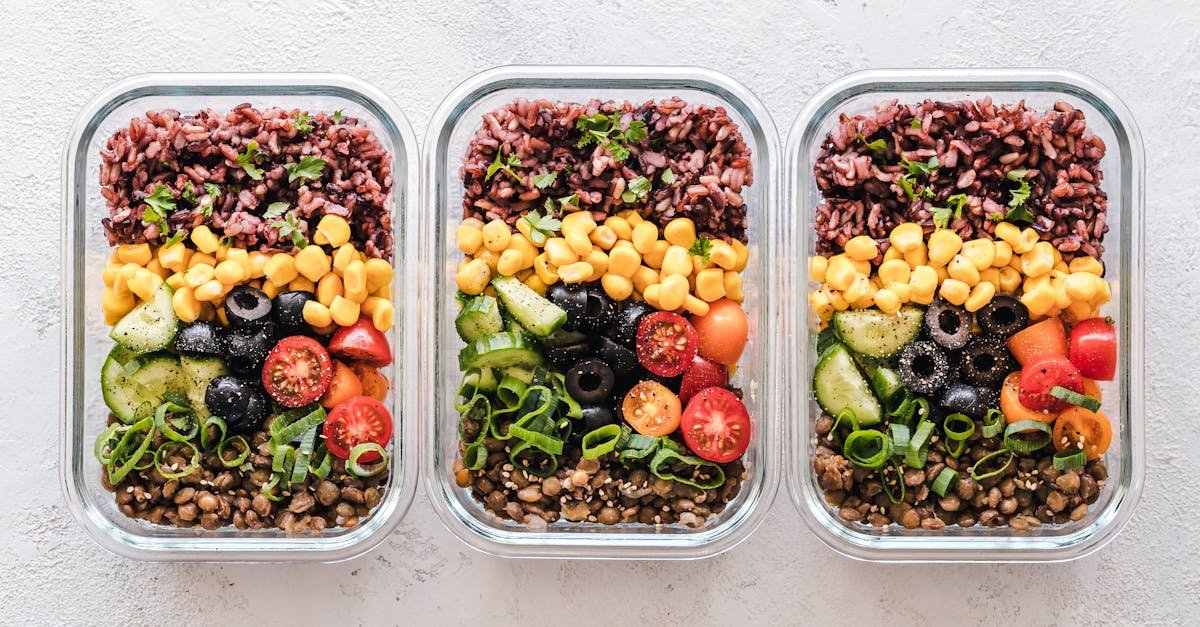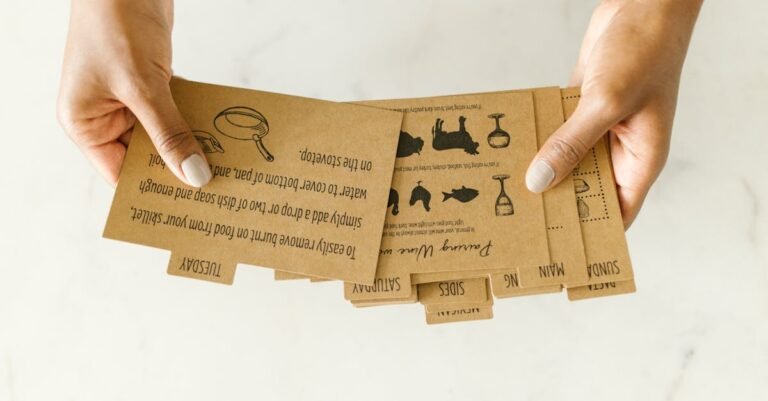Table Of Content
- Meal Prep Basics For Healthy Eating Habits
- What Exactly IS Meal Prep, Anyway?
- Why Bother with Meal Prep? The Amazing Benefits
- Getting Started: Your Meal Prep Action Plan
- Essential Meal Prep Tools and Containers
- Top Tips for Meal Prep Success
- Overcoming Common Meal Prep Hurdles
- Conclusion: Your Healthier, Happier Future Starts Now
- Frequently Asked Questions (FAQs)
Meal Prep Basics For Healthy Eating Habits
Ever feel like healthy eating is this elusive unicorn? You want to eat better, you really do. You picture yourself munching on vibrant salads and wholesome grains. But then… life happens. Work runs late, the kids need something, you’re exhausted, and suddenly, that takeaway menu looks incredibly appealing. Sound familiar? Yeah, I’ve been there too. It often feels like there’s a constant battle between our intentions and reality. But what if I told you there’s a simple, totally achievable strategy that can bridge that gap? Enter the wonderful world of meal prep!
Meal prepping isn’t some complicated, chef level skill reserved for fitness gurus with six packs and endless hours in the kitchen. Nope! At its core, it’s simply about preparing meals or meal components ahead of schedule. Think of it as giving your future self a massive high five – a delicious, healthy high five. It’s about investing a little time now to save yourself a whole lot of stress, money, and unhealthy choices later. Ready to ditch the dinnertime scramble and embrace calmer, healthier mealtimes? Let’s dive into the basics of meal prep and unlock those healthy eating habits you’ve been craving.
What Exactly IS Meal Prep, Anyway?
Okay, let’s break it down. “Meal prep” sounds straightforward, right? Preparing meals. But it’s actually a beautifully flexible concept. It doesn’t necessarily mean cooking five identical chicken and broccoli lunches to eat robotically throughout the week (unless that’s your jam, of course!). Meal prep is the umbrella term for any food preparation done in advance.
This could look like:
- Cooking complete meals: Think fully assembled lunches or dinners, portioned out into containers, ready to grab, heat, and eat. Like having your own personal chef, but it’s you!
- Batch cooking ingredients: Maybe you cook a big batch of quinoa, roast a tray of vegetables, grill some chicken breasts, or hard boil a dozen eggs. Then, throughout the week, you can mix and match these prepped components to create quick and easy meals. It’s like having your own healthy buffet line in the fridge.
- Prepping components: This could be as simple as washing and chopping vegetables, making a big batch of salad dressing, portioning out nuts and seeds for snacks, or blending smoothie packs to store in the freezer. These little steps can drastically cut down on cooking time during busy weeknights.
- Portioning snacks: Dividing up yogurt, fruit, nuts, or veggies into grab and go containers prevents mindless munching and ensures you have healthy options readily available when hunger strikes.
See? It’s not a rigid set of rules. Meal prep is about finding a system that works for your lifestyle, your schedule, and your preferences. It’s about making healthy eating convenient and accessible, removing the friction between wanting to eat well and actually doing it.
Why Bother with Meal Prep? The Amazing Benefits
Alright, so you get the “what,” but maybe you’re still wondering about the “why.” Is dedicating a chunk of your precious weekend (or whenever you choose to prep) really worth it? Oh, absolutely! The benefits of meal prepping extend far beyond just having food ready. Let’s unpack some of the magic.
Save Time Like a Superhero
Think about how much time you spend *thinking* about what to eat, grocery shopping multiple times a week, cooking from scratch every night, and then cleaning up the kitchen chaos. It adds up, doesn’t it? Meal prep streamlines this entire process. By planning and prepping in one focused session, you reclaim precious hours during your busy week. Imagine coming home after a long day, knowing a delicious, healthy meal is just minutes away from being on your plate. No frantic chopping, no last minute grocery runs, no staring blankly into the fridge abyss. It’s like gaining a time saving superpower!
Save Money (Seriously!)
Let’s be real: eating out and ordering takeaways regularly can put a serious dent in your wallet. Even those seemingly innocent trips to the cafe for lunch add up significantly over time. Meal prepping is inherently budget friendly. You buy ingredients in bulk (often cheaper), utilize what you have, plan meals around sales, and drastically reduce impulsive food purchases and expensive convenience meals. You’ll likely be shocked at how much extra cash you have jangling in your pocket (or sitting comfortably in your bank account) once you make meal prep a habit. Plus, you waste less food because you’ve planned exactly how you’ll use those ingredients.
Conquer Your Health Goals
This is often the biggest motivator for people starting meal prep, and for good reason! When you prepare your own meals, you have complete control over the ingredients, portion sizes, and cooking methods. Trying to eat more vegetables? Easier when they’re already washed, chopped, and ready to toss into a salad or stir fry. Want to manage portion sizes? Pre portioning meals takes the guesswork out. Aiming to reduce processed foods, sugar, or unhealthy fats? Cooking from scratch makes this infinitely simpler. Meal prep empowers you to consistently fuel your body with nutritious foods, making it a cornerstone strategy for weight management, improved energy levels, better digestion, and overall well being. You become the architect of your own healthy diet.
Kick Decision Fatigue to the Curb
Ever heard of decision fatigue? It’s a real thing! We make countless small decisions throughout the day, and by the evening, our brains are often fried. The seemingly simple question “What’s for dinner?” can feel overwhelming. Meal prep eliminates this daily dilemma. You’ve already made the decision! Your meals are planned and possibly already cooked. This frees up mental energy, reduces stress around mealtimes, and prevents you from defaulting to less healthy options simply because you’re too tired to think or cook. It brings a sense of calm and order to your eating routine.
Getting Started: Your Meal Prep Action Plan
Feeling inspired? Awesome! Getting started with meal prep doesn’t have to be daunting. Let’s break it down into manageable steps. Think of this as your roadmap to meal prep mastery.
Step 1: Choose Your Meal Prep Style
Remember how we talked about flexibility? This is where you decide what approach feels right for *you* right now. You don’t have to go all in immediately. Consider your schedule, cooking skills, and preferences.
Full Meals Ready to Go
Best for: People who want maximum convenience during the week, dislike cooking daily, or need strict portion control.
What it looks like: Cooking complete breakfasts, lunches, and/or dinners and portioning them into individual containers. Think containers filled with chili, soup, stir fries, casseroles, or grain bowls.
Batch Cooking Ingredients
Best for: People who enjoy variety, like assembling meals quickly, or don’t mind a little bit of cooking/assembly during the week.
What it looks like: Prepping individual components like cooked grains (rice, quinoa), roasted veggies, grilled proteins (chicken, tofu, fish), hard boiled eggs, washed greens, and homemade dressings. You then mix and match these throughout the week.
Grab and Go Snacks/Breakfasts
Best for: Beginners wanting to dip their toes in, people who struggle most with healthy snacking or breakfasts, or those who generally cook dinner fresh but need help elsewhere.
What it looks like: Making overnight oats, chia pudding, breakfast burritos, portioning out yogurt and fruit, bagging up trail mix, or chopping veggies with individual hummus pots.
Pro Tip: You can mix and match these styles! Maybe you prep full lunches but batch cook components for flexible dinners.
Step 2: Plan Your Menu (The Fun Part!)
Okay, now for the creative part! Decide which meals you want to prep for (e.g., lunches Monday Friday, dinners Tuesday Thursday, snacks for the week). Look at your schedule – do you have evening commitments that make cooking impossible on certain nights?
- Browse for inspiration: Look through cookbooks, blogs, Pinterest, or Instagram. Save recipes that look appealing and fit your chosen prep style.
- Keep it simple initially: Don’t try to make five brand new, complex recipes in your first week. Stick to familiar favourites or simple formulas (like grain + protein + veggie).
- Consider longevity: Choose recipes that hold up well in the fridge or freezer. Soups, stews, chilies, grain bowls, and casseroles are often great choices. Delicate salads might be better assembled just before eating (using prepped components).
- Think versatile ingredients: Can that roasted chicken be used in salads, wraps, and grain bowls? Can those roasted veggies accompany different proteins? Smart planning reduces waste.
- Write it down! Whether it’s a fancy planner or a scrap of paper, list out the meals you plan to make.
Step 3: Create Your Grocery List Powerhouse
Once your menu is set, it’s time to hit the store (or order online). A well organized grocery list is your secret weapon against impulse buys and forgotten ingredients.
- Check your pantry/fridge first: See what you already have on hand to avoid buying duplicates.
- Organize by store section: Group items by produce, dairy, meat, pantry staples, etc. This saves you from zig zagging across the store like a lost puppy.
- Be specific: Instead of just “chicken,” write “1 lb boneless, skinless chicken breasts.” Instead of “lettuce,” specify “1 head romaine lettuce.”
- Quantify: Estimate how much of each ingredient you need based on your recipes.
- Don’t forget staples: Include basics like olive oil, salt, pepper, spices, onions, and garlic if you’re running low.
Step 4: Schedule Your Prep Time
This step is crucial! Treat your meal prep session like any other important appointment. Block out a specific time in your calendar when you’re least likely to be interrupted.
- Choose your time: Many people prefer Sunday afternoons or evenings, but maybe a weekday evening or even splitting it into two shorter sessions works better for you.
- Estimate the time needed: Be realistic, especially when starting out. It might take 2 3 hours initially, but you’ll get faster with practice.
- Prepare your kitchen: Before you start cooking, clear your counters, empty the dishwasher, and gather all your recipes, ingredients, and equipment. A clean workspace makes a world of difference.
- Multitask wisely: Get your grains cooking while you chop vegetables. Roast veggies while you sauté chicken. Think about the workflow to maximize efficiency.
Essential Meal Prep Tools and Containers
You don’t need a fancy, professional kitchen to meal prep effectively, but having the right tools can certainly make the process smoother and more enjoyable. Let’s talk essentials.
Containers: Your Food’s Best Friend
Good quality containers are non negotiable. They keep your food fresh, prevent leaks (nobody wants salad dressing decorating their bag!), and make portioning easy.
- Material Matters:
- Glass: Durable, oven safe (often), microwave safe, doesn’t stain or retain odors, environmentally friendly. Can be heavier and more prone to breaking.
- BPA Free Plastic: Lightweight, portable, often stackable and freezer safe. Choose high quality options to avoid staining and warping. Ensure they are microwave safe if needed.
- Stainless Steel: Durable, lightweight, eco friendly, but usually not microwave safe. Great for salads, snacks, or cold meals.
- Size and Shape: Get a variety of sizes – single compartments for full meals, multiple compartments for keeping ingredients separate (like salads with dressing on the side), smaller ones for snacks or sauces. Rectangular or square shapes often stack better in the fridge and freezer.
- Airtight Lids: Look for lids that seal tightly to maintain freshness and prevent spills. Snap lock lids are often very secure.
- Quantity: Start with enough containers for the meals you plan to prep regularly (e.g., 5 lunch containers if prepping weekday lunches). You can always add more later.
Kitchen Gadgets That Help
While basic knives, cutting boards, pots, and pans are essential, a few extra gadgets can be serious time savers:
- Good Quality Knives: A sharp chef’s knife makes chopping much faster, easier, and safer.
- Large Cutting Board: More space means less mess and hassle. Consider having separate boards for raw meat and produce.
- Sheet Pans: Essential for roasting vegetables, baking chicken, or cooking sheet pan meals. Get large, sturdy ones.
- Food Processor or Blender: Great for making sauces, dressings, dips (like hummus), chopping nuts, or blending smoothies.
- Slow Cooker or Instant Pot: Fantastic for batch cooking soups, stews, shredded meats, or grains with minimal hands on time. Set it and forget it!
- Measuring Cups and Spoons: Accuracy matters, especially when following recipes.
- Kitchen Scale (Optional): Useful for precise portion control if that’s one of your goals.
Top Tips for Meal Prep Success
You’ve got the plan, you’ve got the tools… now let’s talk about making meal prep a sustainable habit. Here are some tried and true tips to keep you motivated and successful.
Start Small, Dream Big
Don’t try to prep three meals a day, seven days a week right from the get go. That’s a recipe for burnout! Begin with just one meal type (like lunches) or prepping for only 2 3 days. As you get comfortable and faster, you can gradually increase the amount you prep. Celebrate the small wins!
Keep it Simple, Superstar
Especially in the beginning, stick to straightforward recipes with fewer ingredients and steps. Think simple roasted vegetables, grilled proteins, easy grain bowls, or big batches of soup. You don’t need gourmet meals every day; focus on nutritious and easy. You can get fancier as you gain confidence.
Embrace Variety
Eating the same exact meal five days in a row can lead to boredom, fast. Combat this by:
- Switching up sauces and spices: The same base of chicken, rice, and broccoli can taste completely different with teriyaki sauce one day and pesto the next.
- Using batch cooked ingredients creatively: Use that batch of quinoa in a salad, a stir fry, or as a side dish.
- Trying one new recipe each week: This keeps things interesting without being overwhelming.
- Alternating meal types: Maybe have a soup one day, a salad the next, and a grain bowl after that.
Master Food Safety
This is critical! You want your delicious prepped food to nourish you, not make you sick.
- Cool food completely before putting lids on containers and refrigerating. Trapped steam creates moisture, which can breed bacteria and make food soggy. Aim to get food into the fridge within 2 hours of cooking.
- Store properly: Keep prepped meals in airtight containers in the refrigerator (or freezer).
- Know how long things last: Most cooked meals last 3 4 days in the fridge. If prepping further ahead, utilize your freezer. Label containers with the date prepped.
- Reheat thoroughly: Ensure food reaches a safe internal temperature (usually 165°F or 74°C) to kill any potential bacteria.
- When in doubt, throw it out: If something smells off, looks weird, or you’re unsure how old it is, don’t risk it.
Overcoming Common Meal Prep Hurdles
Even seasoned meal preppers face challenges. Let’s address some common roadblocks and how to navigate them.
“I Don’t Have Time!”
This is the most frequent excuse, but often it’s about *making* time. Remember the time saving benefits *during* the week!
- Start smaller: Prep just one or two components instead of full meals. Even pre chopping veggies saves time later.
- Split sessions: Do your chopping one evening and cooking the next. Or prep snacks during the week and main meals on the weekend.
- Cook once, eat twice (or thrice!): When cooking dinner, intentionally make extra servings to pack for lunch the next day.
- Utilize time saving appliances: Let your slow cooker or Instant Pot do the heavy lifting.
- Reframe it: Think of it as an investment in your health and well being, not just another chore.
“I Get Bored Eating the Same Thing!”
Totally valid! Variety is key.
- Focus on components: Batch cook versatile ingredients (chicken, quinoa, roasted veggies) and assemble them differently each day with various sauces, spices, or fresh toppings (avocado, nuts, fresh herbs).
- Theme your weeks: Maybe one week is Mexican inspired, the next Italian. This guides your ingredient choices and keeps flavours fresh.
- Prep for fewer days: If five days of the same lunch is too much, prep for three and plan for something different or leftovers on the other two.
- Freezer stash: Keep a variety of prepped meals in the freezer to pull from when you need a change.
“My Food Gets Soggy!”
Ah, the dreaded soggy salad or mushy meal. This often comes down to preparation and packing techniques.
- Keep components separate: Especially for salads, store dressings, wet ingredients (like tomatoes), and crunchy toppings separately until just before eating. Mason jar salads work well for this.
- Cool completely: As mentioned in food safety, letting food cool fully before storing prevents condensation buildup.
- Choose sturdy ingredients: Hearty greens like kale hold up better than delicate lettuce. Roasted vegetables often reheat better than steamed ones.
- Undercook slightly: If reheating pasta or grains, cook them slightly al dente, as they will cook a bit more upon reheating.
- Drain excess liquid: Ensure ingredients like beans or cooked meats are well drained before adding them to meals.
Conclusion: Your Healthier, Happier Future Starts Now
So there you have it – the lowdown on meal prep basics! It’s not about perfection; it’s about progress. It’s about taking control of your food choices, saving time and money, reducing stress, and ultimately, building sustainable healthy eating habits. Remember, meal prep is a tool, a flexible strategy you can adapt to fit your unique life. Whether you start by simply chopping veggies for the week or diving into batch cooking full meals, every little bit of preparation is a step towards a healthier, less stressed version of yourself.
Think of the peace of mind that comes with knowing nutritious meals are waiting for you. Imagine the extra time you’ll have, the money you’ll save, and the energy you’ll gain. It might take a little practice to find your rhythm, but the rewards are truly worth the effort. So, pick a starting point, grab some containers, put on some music, and give it a go this week. Your future self will thank you!
Frequently Asked Questions (FAQs)
1. How long do prepped meals actually last in the fridge?
Generally, most cooked meals stored properly in airtight containers will last for 3 to 4 days in the refrigerator. Some items, like salads with dressing already added or certain seafood dishes, might have a shorter lifespan. Always use your senses (smell, sight) and err on the side of caution. If you need meals for longer than 4 days, the freezer is your best bet!
2. Is it safe to reheat meal prepped food in plastic containers?
It depends on the plastic. You should only reheat food in plastic containers that are specifically labeled as “microwave safe.” Look for the microwave symbol (often wavy lines). If a container isn’t marked as safe, or if it’s old, warped, or scratched, it’s best to transfer the food to a microwave safe plate or bowl (like glass or ceramic) before reheating. Even with microwave safe plastic, some people prefer reheating in glass to avoid any potential chemical leaching.
3. I live alone. Is meal prepping still worth it for just one person?
Absolutely! Meal prepping can be incredibly beneficial for single individuals. It prevents food waste (it’s hard to use up ingredients when cooking for one), saves money compared to eating out or getting takeout frequently, and ensures you have healthy meals ready even when you lack motivation to cook a full meal just for yourself. You can easily scale recipes down or freeze extra portions for later weeks.
4. Won’t the nutrients degrade in food that’s been prepped and stored for days?
There can be some minor nutrient loss over time, particularly for certain vitamins like Vitamin C, especially with reheating. However, this loss is generally minimal and far outweighed by the nutritional benefits of eating a consistently healthy, home cooked meal compared to potentially grabbing processed foods or less nutritious options when unprepared. Proper storage (airtight containers, refrigeration) helps minimize nutrient degradation.
5. Do I have to spend my entire Sunday prepping? What if I don’t have a big block of time?
Not at all! While Sunday is popular, find what works for *your* schedule. You can split prep into smaller sessions (e.g., chop veggies one night, cook proteins another), utilize weeknight evenings, prep just breakfasts and snacks, or simply cook double batches of your dinners during the week to use as lunches. Even 30-60 minutes of focused prep can make a significant difference.










